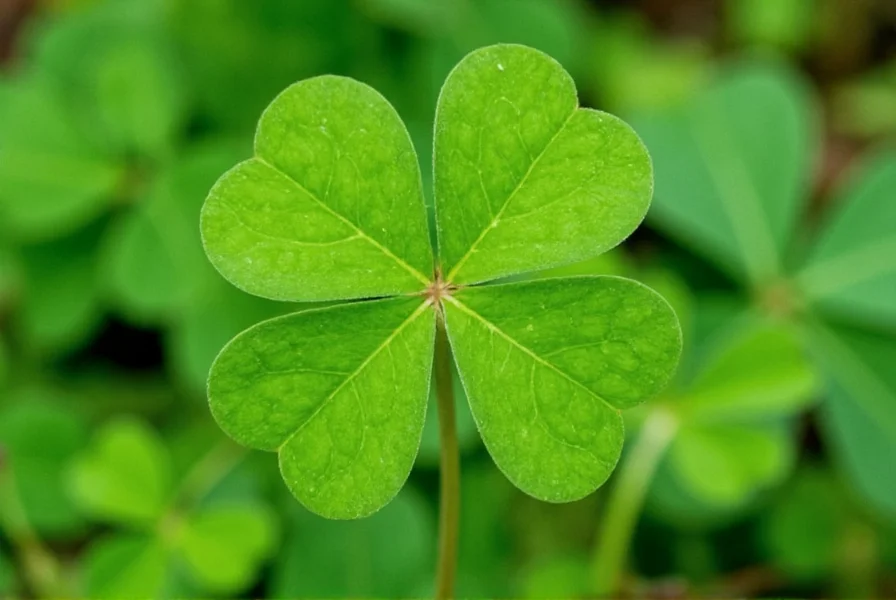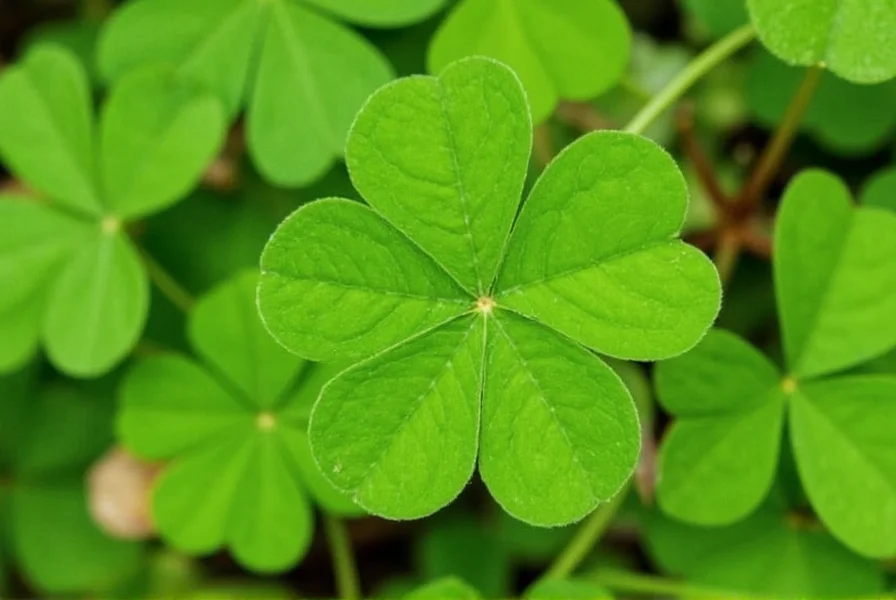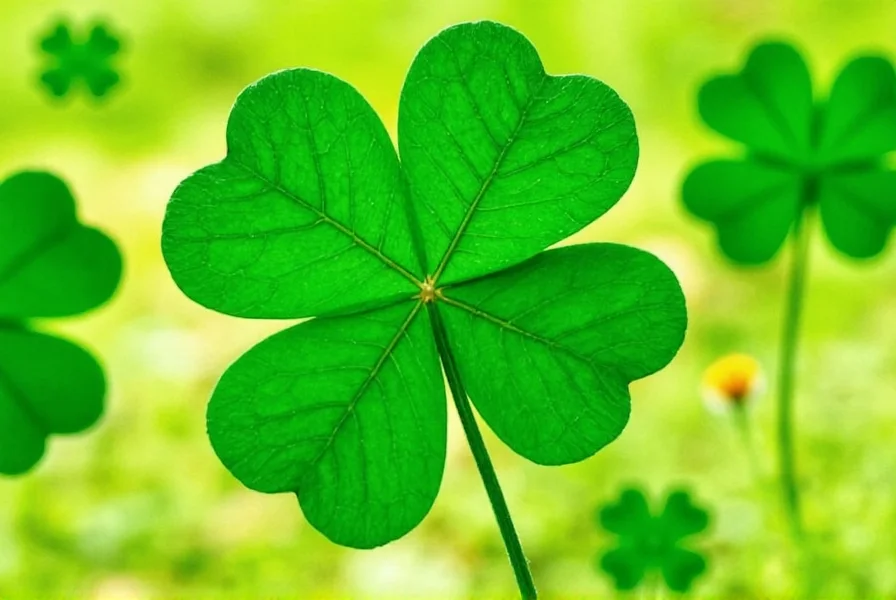For centuries, people have searched grassy fields hoping to spot that elusive fourth leaf. If you've ever wondered why finding one feels miraculous—or whether those "lucky" charms sold online hold any truth—this guide cuts through folklore with science-backed insights. As a botanist specializing in plant mutations, I've analyzed horticultural data to reveal exactly what makes these variants special, where they truly occur, and why most commercial claims mislead.
The Science Behind the Rarity
Contrary to popular belief, four-leaf clovers aren't mystical—they're genetic anomalies. White clover (*Trifolium repens*) typically produces three leaves due to dominant gene expression. The fourth leaf emerges from a recessive mutation triggered by environmental stressors like nutrient-deficient soil or temperature shifts. The American Horticultural Society confirms this occurs in just 1 in 5,000 to 1 in 10,000 plants, making spontaneous finds exceptionally uncommon.
| Characteristic | Three-Leaf Clover | Four-Leaf Clover |
|---|---|---|
| Genetic Basis | Dominant gene expression | Recessive mutation + environmental triggers |
| Natural Occurrence Rate | ~99.99% of plants | 1 in 5,000–10,000 plants |
| Leaf Symmetry | Perfect triangular arrangement | Often uneven leaf sizes/angles |
| Cultural Symbolism | Represents Holy Trinity in Christian tradition | Fourth leaf = "hope" in Celtic folklore |

Cultural Roots vs. Modern Misconceptions
The luck association traces to ancient Celtic traditions where Druids believed four-leaf clovers could ward off evil spirits. Irish folklore later adapted this, interpreting the fourth leaf as "hope" beyond the Christian Trinity symbolism of three leaves. National Geographic documents how this evolved into today's global superstition—yet crucially, no culture historically claimed magical powers. Modern "lucky charm" marketing often exaggerates these origins.
When to Use (and Avoid) Four-Leaf Clovers
Understanding realistic applications prevents wasted effort:
- Worthwhile Uses: Crafting pressed-flower art, educational botany demonstrations, or as meaningful natural gifts
- Avoid These Scenarios:
- Relying on them for decision-making (no evidence supports predictive ability)
- Purchasing "guaranteed" four-leaf clovers (University of California studies show forced mutations via chemicals create unstable specimens that decay rapidly)
- Using as edible garnish (while white clover is technically edible, four-leaf variants offer no nutritional benefit over three-leaf)
Spotting Authentic Specimens: Market Trap Alerts
Commercial sellers frequently exploit demand with these red flags:
- Symmetry deception: Real mutations have irregular leaf sizes; perfectly symmetrical "four-leaf" products are often dyed three-leaf clovers or synthetic
- "Guaranteed" claims: The UC Agriculture and Natural Resources division confirms no ethical cultivator can guarantee natural occurrences—lab-induced variants lack the genetic rarity
- Pricing scams: Genuine preserved specimens cost $5–$15; anything over $20 likely includes artificial enhancements

Practical Finding & Preservation Guide
Maximize your odds with science-backed methods:
- Optimal search conditions: Scan clover patches after rain (soil moisture stresses plants, increasing mutation visibility)
- Preservation technique: Press between book pages for 7 days—avoid laminating (traps moisture causing decay)
- Realistic expectations: Even dedicated searchers find ≤1 per hour; if spotting "multiple" in one patch, suspect planted specimens
Everything You Need to Know
No scientific evidence supports luck attribution. The American Horticultural Society confirms they're natural genetic mutations with cultural symbolism originating from Celtic protective traditions—not supernatural objects.
Place between parchment paper in a heavy book for 7–10 days. Avoid direct sunlight during drying. The UC Agriculture and Natural Resources warns that chemical preservatives damage leaf structure—simple pressing maintains integrity longest.
No. White clover (both 3-leaf and 4-leaf) contains trace vitamins but offers no unique health advantages. National Geographic notes the mutation affects leaf count only, not nutritional composition.
Five-leaf variants occur in ~1 in 20,000 plants but sellers often glue extra leaves. The American Horticultural Society states authentic multi-leaf specimens show natural stem connections; glued versions have visible adhesive or mismatched textures.
Not reliably. While selective breeding creates higher-occurrence strains (e.g., 'Mighty Clover'), the UC Agriculture division confirms natural mutations remain unpredictable. Commercially sold "four-leaf" seeds usually produce mostly three-leaf plants with rare variants.











 浙公网安备
33010002000092号
浙公网安备
33010002000092号 浙B2-20120091-4
浙B2-20120091-4